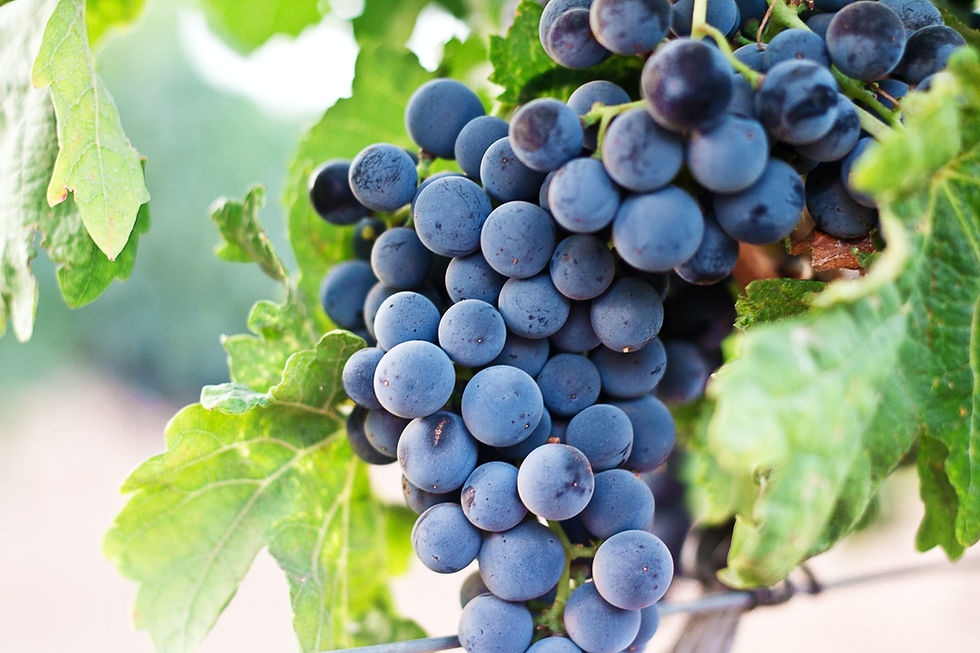4 Infused Wines of Ancient Medicine
- Sylvia Rose

- Aug 24, 2024
- 5 min read
Updated: Jan 4
Myrtle, Rose, Scammory and Flowers of Brass are four infused wines used medicinally in the ancient world. Infused wine in medicine often begins with wine already made. Ingredients such as berries, roots, herbs and even metals are added. The wine is then further processed.

These recipes come from Pedanius Dioscorides (c. 40 - 90 AD), Greek physician and father of pharmacology. A physician in the army of Nero, he also travels the Mediterranean and Near East to collect medical wisdom.
His detailed and comprehensive work De Materia Medica documents natural medicines and their uses. Dioscorides has immense influence in the world of medicine in the ancient and medieval periods. Some of his concepts and recipes are still used today.

1. OINOS MURTITES
Myreum: Myrtle Wine
"Myrteum is made as follows. Take black overripe myrtle berries, beat them, squeeze out the juice with a press and put it in a jar. Some also boil it away to two thirds; and some set the berries out in the sun first.

"Dry them and mix three half pints water and an equal amount of old wine to two pints of them pounded; then strain it out and put it in jars. It is excessively astringent, good for the stomach, effective for a flowing stomach and intestines; also for ulcers within, and excessive discharges. As dye it makes the hair on the head black."
Myrtle: physician Galen (c. 129 - 216 AD):
"The Greeks call this fruit the myrtle. Like the juniper berry it provides no nourishment, but its power is the complete opposite. For it is considerably astringent, so it checks the bowels. In its power of cooling, although not in proportion to its astringency, because it contains not only astringency, but also an admixture of some bitterness.

"It is a trait common to all foods with a marked medicinal quality that when they lose this power through boiling, baking or soaking, they afford hardly any nourishment the body, whereas to begin with they give absolutely no nourishment. The same thing happens with onions and leeks."
Galen dominates medicine for almost two thousand years with his advocation of the Four Humors, based on the work of Hippocrates. Renaissance physician Paracelsus condemns this approach and even burns his books, but the Humors prevail into the 19th century.
2. SKAMMONITES
Convolvulus scammonia (Scammony) Wine

"The root of scammony is dug up at the time of harvest, then pounded finely and bound in a linen cloth. Throw fifteen teaspoons of it into six pints of must for thirty days. It purges the bowels, expelling bile and phlegm."
The term 'must' comes from Latin vinum mustum, meaning 'young wine'. Must is the name given to the freshly pressed grape juice, containing skins and stems of the grapes. It's the first step in winemaking after grapes are harvested from the vine.

3. CHALKOU ANTHOS
Flowers of Brass
"The flowers of brass, which some of the ancients called psegma (shavings) are best if very brittle and very red when crushed finely; and like millet in size — small, heavy and mildly glittering — and besides, not containing any dust of brass with which it is counterfeited."
Brass is an alloy of copper and zinc, both minerals necessary for life, and both often used in metal dyeing. Accidentally discovered c. 500 BCE, brass is prized in Europe for casting or decoration. The Greeks know brass as 'oreichalcos', brilliant white copper.

"The powder spreading out when crushed by the teeth allows one to discern it. It is made as follows:
"When the brass melted in metallic furnaces runs through the colanders of the adjoining pipes into the receptacles, those who supervise take away the scum, and pour on the purest water to cool it.
"The previously mentioned flower of brass is 'spit out' as a result of this sudden thickening and hardening. Flower of brass is therapeutic for the bowels, represses abnormal growths, and wears off those things that darken the sight of the eyes as it is excessively biting.

"If forty grains are given it extracts thick fluids. It consumes abnormal growths of flesh in the nostrils, and with wine it represses pustules on the perineum. White flowers of brass are blown into the ears through a pipe for deafness that has lasted a long time. It is beaten finely and applied with honey to repress the tonsils and uvula."
Metals such as silver, gold, zinc and copper are often taken as medicines even today. Leaves of silver and gold are used in cuisine.

4. OINOS RODITES
Rose Wine
"Redites is made as follows. Bind one pound of roses — that were dried and pounded — in a linen cloth and put it into eight pints of must [grape pulp]. After three months strain it, put it in other jars and put it away.
It is good for those without fever, for digestion of the stomach and its disorders (taken as a drink after meat), as well as for moist bowels and dysentery. It is also made with the juice of roses and honey mixed together and this is called rhodomeli. It is good for roughness in the throat.

In the ancient world the ingredients and processing of wine infusions are often kept secret and like wine itself, can be unique to their places of origin. Bitters, often taken for digestion and health in Europe, are a type of infused wine, as is the snake wine of the East.
Non-Fiction Books:
Fiction Books:
READ: Lora Ley Adventures - Germanic Mythology Fiction Series
READ: Reiker For Hire - Victorian Detective Murder Mysteries


